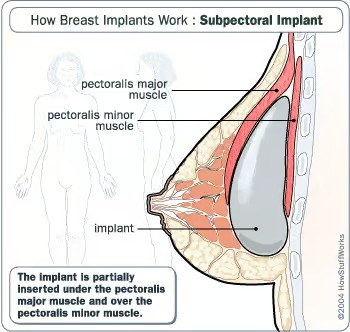Thinking about breast augmentation? Here’s your chance to embrace the silhouette you’ve always wanted, giving you confidence and comfort in your own skin. We can help you create a plan that enhances your natural shape, balancing fullness and proportion to achieve beautiful, natural-looking results.


For many women, breast augmentation is a life-changing procedure, boosting self-esteem and providing the proportions they’ve always desired. Whether you’re looking to enhance size, correct asymmetry, or restore fullness after pregnancy or weight loss, we are here to help you achieve the look you envision.
Breast augmentation, or augmentation mammoplasty, is a surgical procedure designed to enhance the size, shape, and overall appearance of the breasts. Women seek this procedure for a variety of personal reasons, including:
With today’s advanced surgical techniques and high-quality implants, patients can achieve results that look and feel natural, creating a seamless blend with their existing features.
Your journey to achieving your ideal look begins with a detailed consultation with Dr. Marc and Dr. Derek Polecritti, who takes the time to listen to your goals and concerns. During this appointment, we will:
We believe that breast augmentation is not a one-size-fits-all procedure. Every woman has different proportions, and our goal is to enhance your natural beauty while maintaining a look that feels authentic to you.

Selecting the best implants for your body is a key part of the process. We offer saline and silicone implants, both of which are FDA-approved and designed to provide long-lasting results.
Dr. Marc and Dr. Derek Polecritti will help you explore these options in detail, ensuring that the chosen implant complements your body proportions while achieving your desired aesthetic.

The placement of your implants plays a crucial role in achieving the best results. Depending on your anatomy and preferences, implants can be placed in the following ways:
Dr. Polecritti will evaluate your breast tissue, lifestyle, and cosmetic goals to determine the best placement method for you.
Breast augmentation requires small incisions to insert the implants, and we use strategic techniques to minimize visible scarring. The most common incision locations include:
Each incision type has unique advantages, and we will discuss which option best suits your body type and aesthetic goals during your consultation.
Breast augmentation is performed under general anesthesia in our state-of-the-art surgical facility. The procedure typically takes one to two hours and follows these steps:

Recovery varies for each patient, but most experience mild swelling and discomfort for the first few days. To promote healing and long-term satisfaction, we provide clear post-operative guidelines:
Most patients can return to normal activities within a few weeks, though full results continue improving over the next several months.
When selecting a surgeon for your breast augmentation, experience, expertise, and a commitment to patient satisfaction matter. At The Julian Institute, we take pride in:
If you’re considering breast augmentation in Spring Hill, FL, there’s no better time to take the next step. At The Julian Institute of Plastic Surgery, we are dedicated to providing expert care with a focus on achieving natural, beautiful results.
Schedule a consultation with Dr. Marc and Dr. Derek Polecritti today and discover how breast augmentation can enhance your confidence and help you achieve the look you’ve always wanted. Contact us at (352) 556-5248 or visit our website to learn more about your options and begin your journey toward a more confident you.

This is a very important part of the process and during your consultation, Dr. Polecritti will assist you in deciding your ideal size. We have a wide range of implant sizes and profiles available to try on during your consultation in both saline and silicone. We also will have you look at pictures of other patients and actresses to estimate the volume and size that you find most pleasing. Keep in mind, bra cup size is not standardized. For example, a B cup could easily be a C cup in another brand. Therefore, determining the size implant you desire based only on bra cup size alone may not be the best method.
Both saline and silicone gel implants are available for your augmentation. The FDA has approved both saline and silicone gel implants for cosmetic enhancement. Several factors weigh into which implant style will be the right choice for your anatomy. (Some of these factors include: the amount of natural breast tissue you have now, the size of the implants you are interested in, are the implants to be placed below or above the muscle?, and will you require a breast lift in addition to the augmentation?) The silicone implants used today are a vast improvement in design compared to those of the past. Today, they are made with a medical grade cohesive gel, which causes the implant to maintain its shape and resists silicone leakage. These implants are sometimes called “gummy bear” implants because of their similar consistency to the gummy bear candy.
Please view the video of Dr Polecritti demonstrating the strength and fill of the different implants in the News & Video section.

The implants can be placed on top of the pectoralis muscle but under the breast tissue. The term used for placement in this location is Subglandular. The implants can also be placed under the pectoralis muscle and against the chest wall. This is termed, Submuscular. Many factors play into the decision as to the best location in each individual. Dr Polecritti will discuss all of the pros and cons associated with each location during your consultation.
The dual plane technique incorporates some of the benefits of both the subglandular and the submuscular placement. The implant is covered by the pectoralis muscle at the superior pole or top of the breast, but is subglandular at the inferior pole or lower portion of the breast). In certain individuals, this provides a very nice result. Dr. Polecritti will discuss this option for you during your consultation.

You have several options here as well. The incision can be under the breast within the inframammary crease, within the hair bearing skin of the armpit, or along the bottom border of your nipple/areola. There are several factors which favor one sight over the other and Dr. Polecritti will assist you in choosing the right choice for you.
Most patients tolerate the surgery quite well with little or no medication. You will receive medication for pain as well as for muscle spasm should you need them. The sutures are absorbable and will not have to be removed. You will wear a loose fitting sports bra for several weeks and avoid underwire bras until instructed to do so. Typically, the submuscular placement is associated with a bit more discomfort and recovery than the subglandular placement. Some swelling is expected in either case and will gradually resolve over the first couple of weeks. The implants typically feel hard and firm early after surgery but over the next 1-2 months will soften and appear more natural. This is sometimes referred to as “dropping in”. Strenuous exercise or activity can be resumed in 4-6 weeks.

A Breast Augmentation is one of the most frequently performed procedures at The Julian Institute of Plastic Surgery in Tampa, Florida. Patients seek a breast augmentation to increase the size and shape of their breast, replace lost breast tissue after pregnancy or to obtain symmetry between their breasts. Dr. Polecritti offers a wide range of breast augmentation techniques around Tampa, Florida, in order to individualize the best option for each patient’s anatomy.
This is a very important part of the process and during your consultation, Dr. Polecritti will assist you in deciding your ideal size. We have a wide range of implant sizes and profiles available to try on during your consultation in both saline and silicone. We also will have you look at pictures of other patients and actresses to estimate the volume and size that you find most pleasing. Keep in mind, bra cup size is not standardized. For example, a B cup could easily be a C cup in another brand. Therefore, determining the size implant you desire based only on bra cup size alone may not be the best method.
Both saline and silicone gel implants are available for your augmentation. The FDA has approved both saline and silicone gel implants for cosmetic enhancement. Several factors weigh into which implant style will be the right choice for your anatomy. (Some of these factors include: the amount of natural breast tissue you have now, the size of the implants you are interested in, are the implants to be placed below or above the muscle?, and will you require a breast lift in addition to the augmentation?) The silicone implants used today are a vast improvement in design compared to those of the past. Today, they are made with a medical grade cohesive gel, which causes the implant to maintain its shape and resists silicone leakage. These implants are sometimes called “gummy bear” implants because of their similar consistency to the gummy bear candy.
Please view the video of Dr Polecritti demonstrating the strength and fill of the different implants in the News & Video section.
The implants can be placed on top of the pectoralis muscle but under the breast tissue. The term used for placement in this location is Subglandular. The implants can also be placed under the pectoralis muscle and against the chest wall. This is termed, Submuscular. Many factors play into the decision as to the best location in each individual. Dr Polecritti will discuss all of the pros and cons associated with each location during your consultation.

The dual plane technique incorporates some of the benefits of both the subglandular and the submuscular placement. The implant is covered by the pectoralis muscle at the superior pole or top of the breast, but is subglandular at the inferior pole or lower portion of the breast). In certain individuals, this provides a very nice result. Dr. Polecritti will discuss this option for you during your consultation.

You have several options here as well. The incision can be under the breast within the inframammary crease, within the hair bearing skin of the armpit, or along the bottom border of your nipple/areola. There are several factors which favor one sight over the other and Dr. Polecritti will assist you in choosing the right choice for you.
Most patients tolerate the surgery quite well with little or no medication. You will receive medication for pain as well as for muscle spasm should you need them. The sutures are absorbable and will not have to be removed. You will wear a loose fitting sports bra for several weeks and avoid underwire bras until instructed to do so. Typically, the submuscular placement is associated with a bit more discomfort and recovery than the subglandular placement. Some swelling is expected in either case and will gradually resolve over the first couple of weeks. The implants typically feel hard and firm early after surgery but over the next 1-2 months will soften and appear more natural. This is sometimes referred to as “dropping in”. Strenuous exercise or activity can be resumed in 4-6 weeks.
Every woman has certain asymmetries when comparing their breasts. The nipple/areola may be larger on one side, it may be a bit higher or lower on one side. The nipple and or center of your breast may point more to the outside than the other. You may have a wide sternum which causes the breasts to naturally lie towards the outside limiting cleavage, etc. Breast augmentation can address and improve some of these asymmetries and if there is volume discrepancy, different size implants can be used to improve this appearance. However, in many cases the implant only adds volume to the breast and the asymmetries that were there before surgery are still there after. In some cases, the increased size of the augmented breast accentuates these asymmetries. It is important to recognize these individual differences before under going breast augmentation surgery. Call Now – Telephone: (352) 290-4117 View our Specials & Breast Augmentation Before & After pictures »
This is one of many answers that your prospects or customers frequently hope to see when they click on the plus icon above. They could vary in length and context. However, make them short and accurate.This is one of many answers that your prospects or customers frequently hope to see when they click on the plus icon above. They could vary in length and context. However, make them short and accurate.
This is one of many answers that your prospects or customers frequently hope to see when they click on the plus icon above. They could vary in length and context. However, make them short and accurate.
This is one of many answers that your prospects or customers frequently hope to see when they click on the plus icon above. They could vary in length and context. However, make them short and accurate.
The cost of breast augmentation varies based on the specific procedural plan, the type of implants used, and any additional procedures needed to achieve your desired results. At The Julian Institute of Plastic Surgery, we provide customized treatment plans tailored to each patient’s needs. On average, the cost of breast augmentation in Spring Hill, Tampa Bay is approximately $6,500. However, during your consultation, we will provide a detailed price breakdown and discuss financing options to make the procedure more affordable. It’s important to prioritize quality and experience over cost when selecting a plastic surgeon.
Yes, many women who undergo breast augmentation can still breastfeed successfully. The ability to breastfeed depends on factors such as the surgical technique used, the placement of the incision, and individual anatomy. Incisions made under the breast (inframammary) or through the armpit (transaxillary) generally do not interfere with milk ducts. However, incisions around the nipple (periareolar) may carry a slightly higher risk of affecting breastfeeding. If you plan to have children in the future and want to breastfeed, be sure to discuss this with your surgeon during your consultation.
Breast implants are not considered lifetime devices, but they can last 10 to 20 years or more, depending on the type of implant and individual factors. The most common reasons for implant replacement include rupture, leakage, capsular contracture (scar tissue hardening around the implant), or a change in aesthetic preferences. Regular follow-ups with your plastic surgeon and routine imaging (such as MRIs for silicone implants) can help monitor the condition of your implants over time.
The initial recovery period for breast augmentation is typically one to two weeks, during which patients experience swelling, discomfort, and limited upper-body movement. Most patients can return to light activities and work within 5 to 7 days, depending on their job type. However, strenuous exercise, heavy lifting, and high-impact activities should be avoided for at least 4 to 6 weeks to allow proper healing. Your surgeon will provide specific post-operative care instructions, including how to manage discomfort and when to resume normal activities.
Breast augmentation is FDA-approved for saline implants at age 18 and silicone implants at age 22. However, the best age for the procedure varies based on personal goals, lifestyle, and overall health. Many women choose breast augmentation in their 20s or 30s to enhance breast volume and shape, while others opt for the procedure later in life as part of a mommy makeover or to restore lost breast volume due to aging or weight changes. The most important factor is being in good overall health and having realistic expectations about the results.
Temporary changes in nipple sensation are common after breast augmentation, but most patients regain normal feeling within a few months as the nerves heal. Some women experience increased sensitivity, while others may have numbness or tingling. In rare cases, permanent loss of sensation may occur, especially if large implants are used or if nerves are affected during surgery. Choosing a skilled and experienced plastic surgeon, like those at The Julian Institute of Plastic Surgery, can help minimize these risks.
Breast implants come in two main types:
Other options include gummy bear implants (a firmer type of silicone implant), round vs. teardrop shapes, and different surface textures. Your surgeon will help you choose the best implant based on your goals and body type.
Yes, breast implants can make mammograms more challenging, but special imaging techniques (such as Eklund views) allow radiologists to examine breast tissue effectively. Women with implants should inform their radiologist before a mammogram so the proper techniques can be used. In some cases, additional ultrasound or MRI scans may be recommended for better breast cancer screening.
Yes! Many women choose to combine breast augmentation with a breast lift (mastopexy) to achieve both increased volume and improved shape. This is especially beneficial for women with sagging breasts due to pregnancy, weight loss, or aging. A breast lift removes excess skin, raises the breasts to a higher position, and reshapes the breast tissue while implants provide additional fullness.
Breast implants do not have a set expiration date, but they may need to be replaced if complications arise or if you desire a change in size or shape. Regular monitoring through self-exams, doctor visits, and imaging helps ensure implant integrity. Most surgeons recommend replacement or revision after 10 to 20 years, but some implants last even longer without issues.
Selecting the right plastic surgeon is crucial for safe and successful results. Look for a surgeon who is:
At The Julian Institute of Plastic Surgery, our expert team prioritizes safety, precision, and natural-looking results to ensure every patient achieves their aesthetic goals.



Fill out the form to request a consultation with our skilled plastic surgeons. We’re here to support you in achieving your aesthetic aspirations with personalized care and guidance.